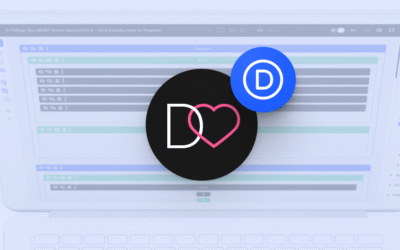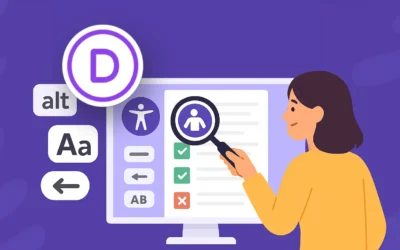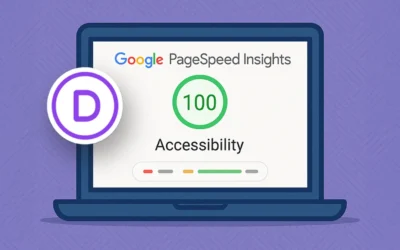Here are our six simple tips to help you navigate your freelancing career.

1. Put yourself in your clients’ shoes
It’s a role-playing game. Try pretending, that you are a potential client looking for the perfect web designer. Where do you look? Do you type “web design freelancer for hire” into a search engine? Or do you go directly to Freelancer, Upwork, or Guru? Where else could your potential customers be looking? In Facebook groups? Type “freelance web designer” into the search box, filter for groups. There you have it: another source of customers!
Different customers will search in different places. If you’re looking for a certain type of customer, focus on the area they are most likely to check. For example, people who want you to take care of the website of their small local business are more likely to search using Google. And big agencies, with more know-how in the business and a constant need for outsourcing their projects, are more likely to use the Facebook groups or websites such as Guru.
Another important question is: What would make your client choose one freelance web designer over the others? Of course, it all depends on your client’s budget and their perceived needs. Flip the coin and think, what kind of customers do you want to attract? What will impress them most? How can you reach them?

2. Study the market, stalk your competition
Web design is a field which evolves fast. Your knowledge from two years back won’t be enough. You need to stay on the ball and study all the new trends. Did you know that gradients are back in fashion? What are the most popular websites nowadays? Which websites look old-fashioned, and which are up-to-date?
Know what’s in and use this knowledge to be always one step ahead of your competition. Speaking of which: there is nothing wrong with learning from your competitors. What do they do right? What do they do wrong? How can you learn from that?
You could also work together! Divi Lover has joined forces with B3 Multimedia Solutions to provide even better services on both sides. Where there is a good team, creative ideas blossom.

3. Have a portfolio or BE a portfolio
Do you have your own website? Excellent! Is your website the best you can do? Because the reaction you want to happen goes like this: a potential customer sees your site and says “That’s what I want!”.
A portfolio is important, of course. If you’re starting out, you may be wondering, how to build a portfolio. Remember, it doesn’t have to contain only the projects you have developed for customers. It’s perfectly normal to include in your portfolio this epic parallax effect you have done for a friend or the amazing blog post module you did for a course. And your website also acts as your portfolio.

4. Build trust
Let’s say you’ve done all the hard work. Your knowledge and skills are up to scratch, your website is fantastic, and you have made it easy for customers to find you. What now?
Remember, how we said that freelancing is a lot more than just building websites? It’s also PR, advertising, workshops – but we have already covered that. Now we have to focus on customer relations and accounting.
If you don’t have an assistant, you have to talk to and e-mail your clients. You need to make them want to hire you. So it’s essential, that you be clear about how much you want to be paid, the payment method, the scope of your work, the deadlines. Draw a contract which will protect both your and your customer’s interests. It’s a good practice to provide your customers with support for a previously stated period. And it’s an even better practice to fix things for free if you make a mistake.
The ground rule is, make your clients happy. Happy clients recommend freelancers. Also, keep tabs on the money. And know your taxes.

5. Organize your work
Let’s briefly touch on human relations as it applies to your one man/woman freelancing business. You probably want to be productive, meet the deadlines, and develop many projects to earn loads of money.
There are tools to help you with that. First, know your pace. How much time does it take to build a website? Add a few days for good measure, so that no unexpected obstacles hinder you from meeting the deadline. Also, remember to add all the time you spend discussing things with your client. And bookkeeping.
It helps if you have fixed hours when you work. If you can’t do that because of an unpredictable lifestyle (children, traveling, a day job, unusual hobbies – you name it), do your best to draw a line between your job and your personal life. It’s easy to burn out if you feel like you’re always at work.
Some freelancers swear by dressing for the office, even if they work from home. Again, it helps you draw the line. You can work in your pajamas, but will you really feel like you’re working then?

6. Love web design! Love your clients!
It’s simple: if you’re passionate about what you do, it shows. When you love web design, learning new things isn’t drudgery – it’s fun! And when you love your clients, they can feel it, too.
It’s in our name: we love Divi. We are passionate about creating websites with Divi. And it works wonders for us!
Are there any things you’d add to the list? And if you’re already working as a freelance web designer, share the story of how you started!




A good summary, for the first point do not forget real life too and networking, nothing replaces human contact to do business !